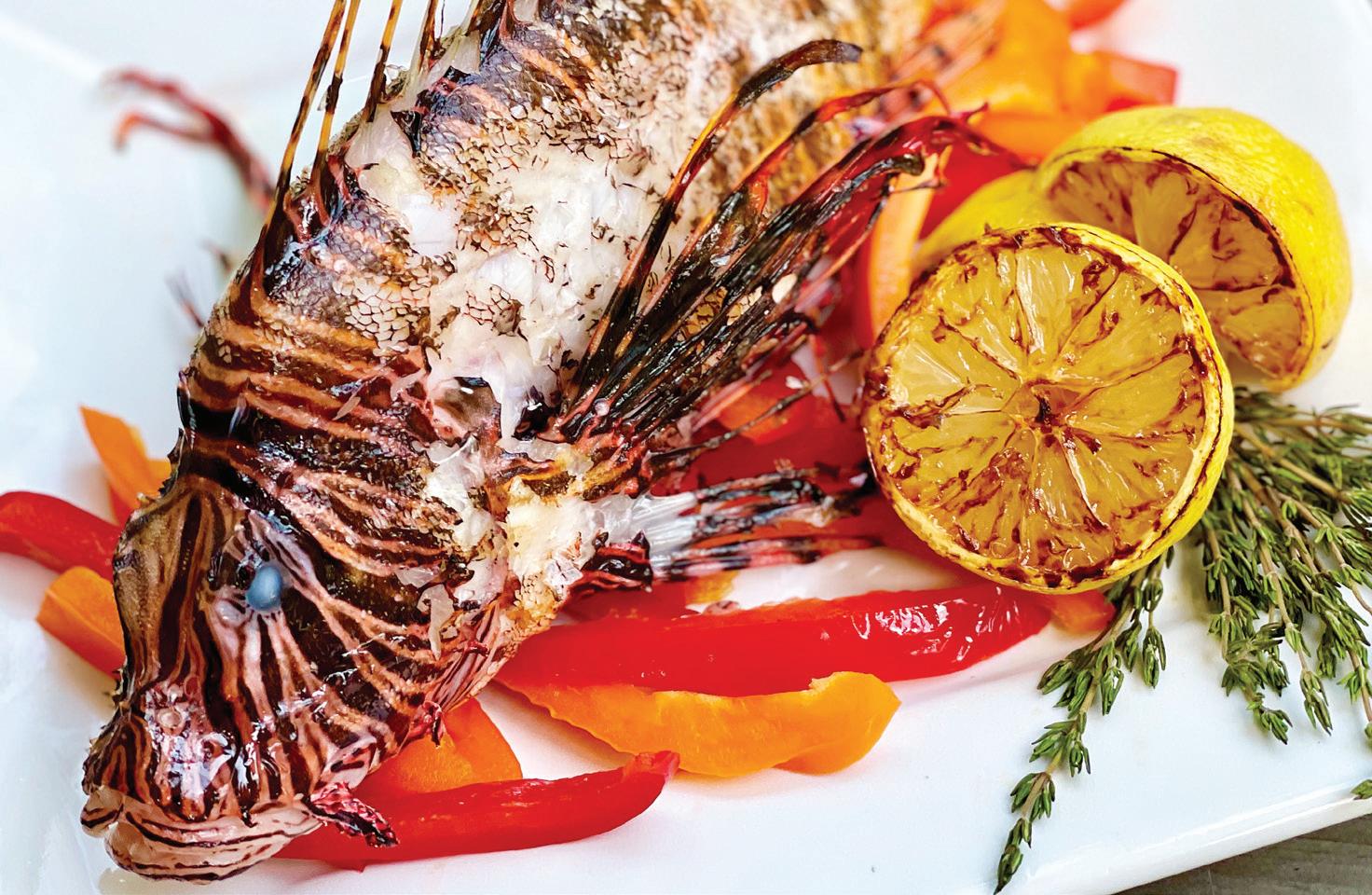
3 minute read
Save a Reef, Eat a Lionfish
Good News: This Invasive Predator Makes a Delicious Meal
By Morgan Banno
Advertisement
As Floridians, we know about the invasive Burmese pythons that slink through the marshy Everglades or the non-native melaleuca trees that shade out indigenous plants to extinction. But there’s another creature wreaking environmental havoc throughout the Gulf of Mexico and beyond: lionfish, with red zebra-striped skin and whimsical, but venomous spines. According to the Florida Fish and Wildlife Conservation Commission (FWC), the voracious lionfish have threatened native reefs around Florida since the early 2000s and they are now rampantly invading as far north as Pensacola and Apalachicola. Not only are lionfish difficult to eliminate, but our native fish are suffering from intense competition.
The good news? Lionfish are delicious.
Nicolas Mora, Assistant Manager at Key West Seafood Company in Gulfport says, “I wish more people knew about lionfish because it’s actually really good!” Key West Seafood sends regular dive boats 100 miles out into the Gulf to spearfish these predators who lurk 150 to 300 feet deep, far beyond the spread and depth of the current red tide. [Note: Lionfish spines are venomous, and can deliver a nasty sting to humans. Ask your local fish market to cut off the spines, or do it yourself with careful handling. Cooking neutralizes the venom, however, and the finished look can be dramatic on the plate.]
When we chatted about ways Floridians can help curb the lionfish population, Mora said, “It would be great if more restaurants served it…. Grilling it whole with the spines makes for a really nice presentation. But my favorite way to eat it is fried.”
I did exactly that. Mora hooked me up with glistening, fresh lionfish that was caught less than 24 hours ago. As he advised, I grilled a whole fish to see the stunning presentation for myself. I also deep fried a smaller, whole fish in a standard flour-egg-fry mix to compare.
But my favorite way to eat these sea invaders is to pan sear them for a good crust and serve over creamy risotto with my Key lime beurre blanc. This recipe will not disappoint and you can relax with a glass of sauvignon blanc knowing you helped save Florida marine life.
The FWC has aggressively tried to manage the species by hosting its annual Lionfish Challenge 2021 “to encourage and reward recreational and commercial divers to remove lionfish from Florida waters.” This year, the statewide challenge runs through September 6 with monthly mini-challenges, recreational and commercial categories and loads of rewards and prize money for bounties caught.
Search for lionfish at myfwc.com for more.
Grilled Whole Lionfish
Yield varies depending on fish size
Ingredients:
1 fresh lionfish, cleaned with spines and fins intact Extra virgin olive oil, for brushing and drizzling Kosher salt Freshly ground pepper 1 lemon, halved 4 stems fresh herbs (tarragon, parsley, oregano, rosemary recommended)
Method:
Light a clean grill on medium-high heat and brush with olive oil. Let fish stand at room temperature for 20 minutes and pat dry with paper towels. Gently brush fish with olive oil, careful not to break spines, and season generously with salt and pepper. Stuff the cavity with fresh herbs. Grill fish uncovered until it releases from the grates. Turn fish and grill until flesh is white and juices run clean. Let fish stand for 10 minutes. Serve over a bed of grilled peppers, garnished with grilled lemon halves.

MORGAN BANNO








